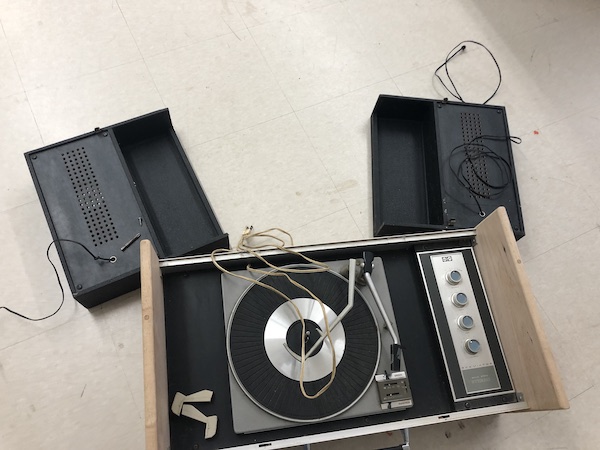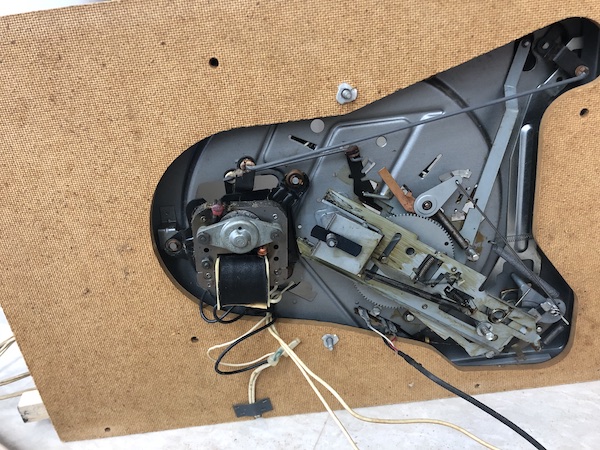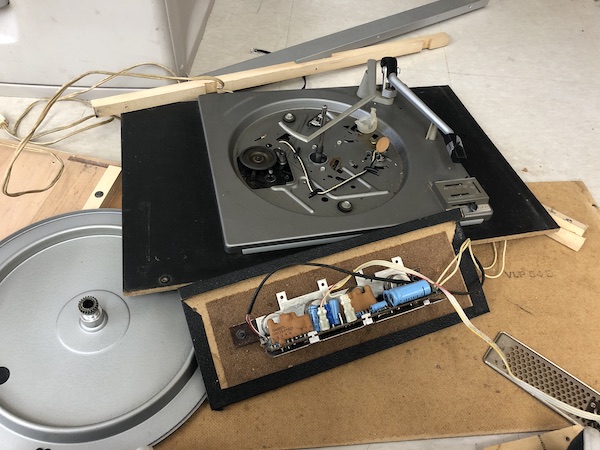13. Applications and implications¶
This week’s project is to:
Propose a final project masterpiece that integrates the range of units covered, answering:
What will it do?
Who’s done what beforehand?
What will you design?
What materials and components will be used?
Where will parts come from?
How much will they cost?
What parts and systems will be made?
What processes will be used?
What questions need to be answered?
How will it be evaluated?
Your project should incorporate 2D and 3D design, additive and subtractive fabrication processes, electronics design and production, microcontroller interfacing and programming, system integration and packaging.
Where possible, you should make rather than buy the parts of your project
Projects can be separate or joint, but need to show individual mastery of the skills, and be independently operable
This page will continually be updated as I continue through the process of creating my record player.
What will it do?¶
It will be able to connect to speakers (via RCA cables) and play records. The preamp will be built in, and it will have a control panel where the speed of the record can be changed (33rpm, 45rpm, 75rpm). I may not use the 75rpm, simply because I have not yet seen a 75rpm record in my record collecting experience. So, even if I did include it in my project, it would not be used very much.
Who’s done what beforehand?¶
I’ve found people who have made parts of what I want to make, but I haven’t yet found anyone in FabAcademy who has made a record player. Luis Díaz Fernández made a hearing aid and therefore made a preamp, which I will be referencing.
What will you design? What parts and systems will be made?¶
- Physical container/base of the record player
- Feet of the record player (completed during Week 10, Molding and Casting)
- Board for the motor (using experience from Week 12, Outputs)
- Platter for the record
- Electronics for the motor, preamp, and control panel
- Tonearm
- Possibly a lid (to prevent dust from getting on the records)
I am considering buying the cartridge from a turntable company since I do not want to damage my records because of a DIY cartridge. I am still thinking about where I would get this cartridge and how much I should spend on it, since I could easily drop over $500 on just a cartridge.
What materials and components will be used? Where will the parts come from? How much will they cost?¶
| Material | Description | Price | Location |
|---|---|---|---|
| 1/4 inch clear acrylic | For the platter | $18.90 | Amazon |
| 1 inch plywood | For the base | N/A | Fab Lab/Home Depot/Lowe’s |
| Single sided PCB | Milling electronics | N/A | Fab Lab |
| ATN81CP Audio Technica Stylus | Record player cartridge | $21.00 | Audio Technica |
I believe that what I need should be part of the FabLab inventory, from electronic components to PLA.
What processes will be used?¶
- CAD: Fusion 360 (designing)
- Casting and molding (feet)
- Laser cutter (platter, lid(?))
- Shop Bot CNC (base)
- 3D print (tonearm, other various parts)
- Eagle (design electronics)
- Bantam (PCB milling)
- Inputs (switch, control panel)
- Outputs (motor)
- Embedded programming
What questions need to be answered?¶
How can I connect an existing stylus to the electronics that I design? How do I make a preamp? The person who made a preamp as part of his final Fab Academy project used KiCad to design the preamp. I will need to figure out how to use KiCad (or at least just figure out how to navigate) it so I can referenced Luis’s schematic/board designs. Where will the electronics be stored, and how large of a space should I allot in my design as an area for the electronics?
I need to learn more about record players in general. I’ve bought an old record player from Goodwill which I will disassemble after final exams, and I’ve already disassembled a record player that Mr. Rudolph had.
Disassembling Mr. Rudolph’s record player¶

The preamp, as I mentioned above, has hand drawn traces, which was really fascinating. I had never seen old electronics with traces like this, so this was really cool to see. Aside from its coolness factor, since the record player was so old, it wasn’t much help for the electronics aspect.

Top and bottom of the platter:


Much of the record player was controlled by physical mechanisms, as shown in the below video. Again, as cool as this was to see, it wasn’t much help with regard to the electronics that I will incorporate into my own record player.
How will it be evaluated?¶
It should be evaluated by its ability to play a record and switch between the different speeds.